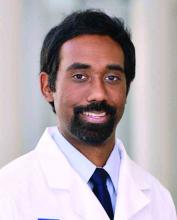Over 20 million endoscopic procedures are performed in the United States annually. A small but significant number of patients undergoing these procedures will have valvular heart disease. Bacteremia can occur after endoscopic procedures, and this may carry an increased risk for the development of infective endocarditis in patients with valvular heart disease.
Throughout the 1980s to 2000s, based on expert opinion and the related American Heart Association (AHA) guidelines in 1997, many patients with valvular abnormalities would routinely receive antibiotics before endoscopy. There would be much anxiety among patients and providers to choose the right antibiotic and not to “miss” a patient with cardiac issues, especially those scheduled as open access. Antibiotics were stocked in GI labs, and questionnaires or intake forms inquired about cardiac history.
Several observational studies have subsequently demonstrated a lack of evidence that endoscopic procedures increase the risk of endocarditis, leading to the AHA publishing new recommendations in 2007 that prophylactic antibiotics were no longer recommended before most endoscopic procedures. This new information and guideline has had a major impact on care, with indications for (and use of) antibiotics prior to endoscopy now dramatically reduced.There are also significant implications for savings in costs and time as well as for reducing adverse events associated with antibiotics. Theoretically, the new guidelines also improved access to endoscopy as those patients who might have avoided procedures due to the perceived risk of endocarditis or the need for prophylactic antibiotics no longer had that concern.
After decades of pre-endoscopy prophylactic antibiotic use, clinical acceptance of the new guidelines took time. During training, I remember concerned looks from patients who had previously routinely received antibiotics. In addition, some consulting cardiologists and referring physicians were either not aware of the new guidelines or were not yet comfortable with the new recommendations, despite the fact that “brushing your teeth leads to more instances of bacteremia than endoscopy” was well known.
Despite the slow start, inappropriate use of prophylactic antibiotics was phased out, and postendoscopy endocarditis did not appear as a new problem, thereby confirming the wisdom of the new approach. This example shows how one article that appeared in the June 2007* issue of GI & Hepatology News introduced an important recommendation that resulted in a major shift in the practice of endoscopy.
Gyanprakash A. Ketwaroo, MD, MSc is an assistant professor in the division of gastroenterology and hepatology at Bayor College of Medicine, Houston, and an Associate Editor of GI & Hepatology News.
*This story was corrected on 1/10/16.




